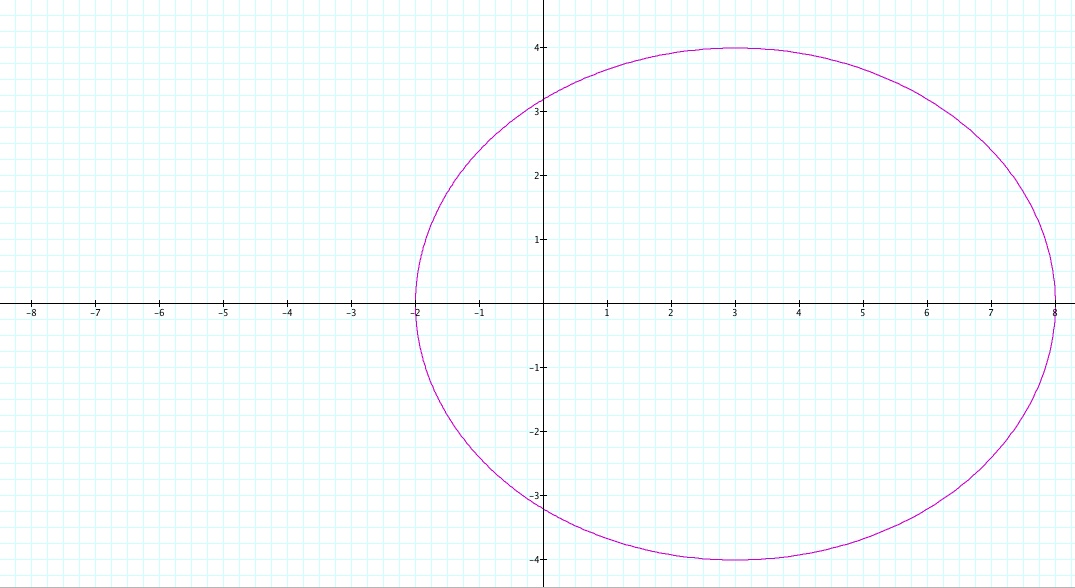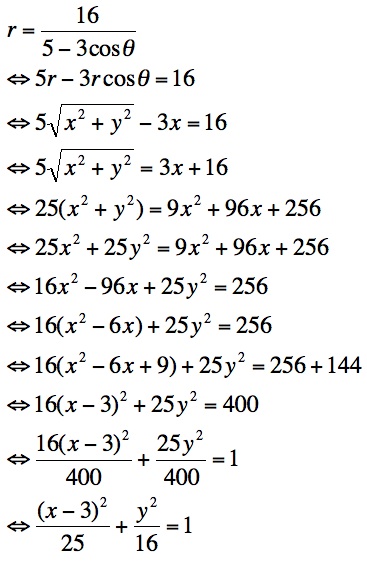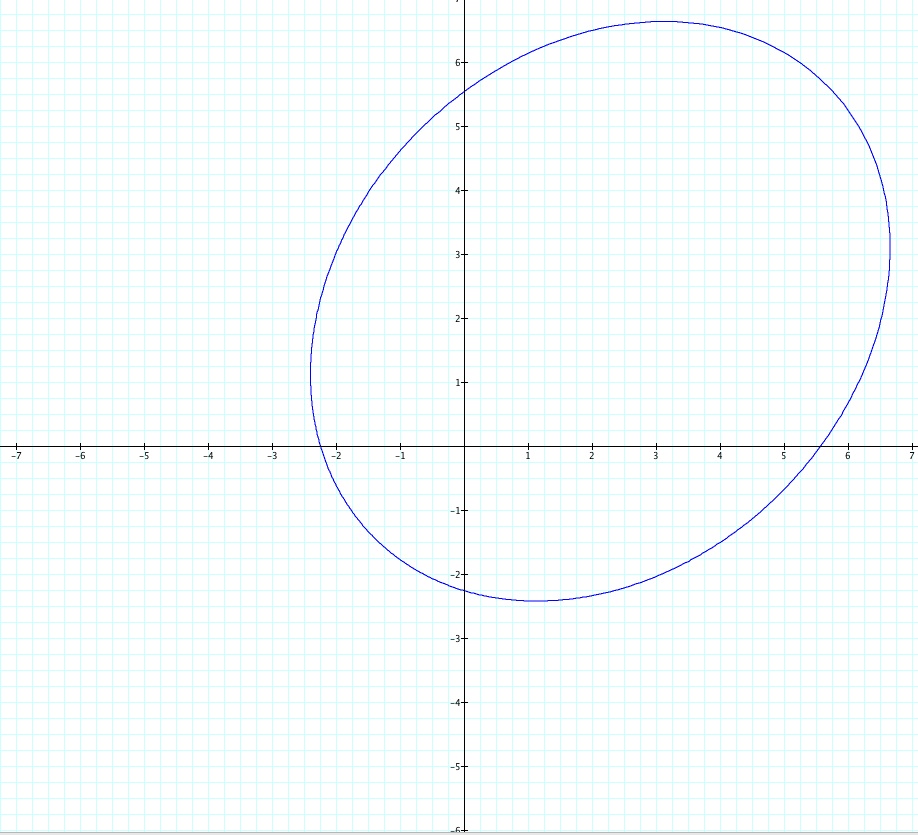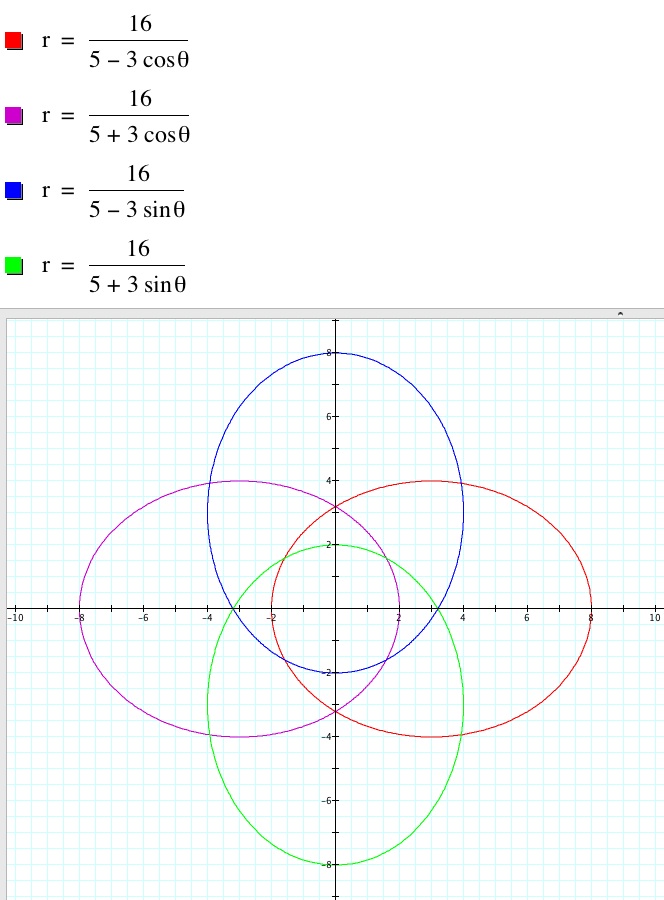

Polar Equations Investigations
by
Rob Walsh
When graphing an equation using polar coordinates, each point on the plane is described by its (r,0) values where r is the distance from the origin and 0 is the angle from the positive x axis. For the sake of discussion, we take our angle measure to be in radians and limit its range as such: 0 < 0 < 2pi. Let's check out some polar equations involving sine and cosine and find out why their graphs look like they do...
![]()

click here for link to GCF file
One of the first things we can do here is look into values of 0 on the axes. When 0 = 0, which occurs on the positive x-axis, then cos 0 = 1 and just like our graph shows, our function value r = 8. Similarly, when 0 = pi on the negative x-axis, then cos pi = -1 and so, r = -2. If we let 0 go beyond our set boundaries, then these two values on the x-axis would simply continue. We can look a little further into this graph by also observing that the ellipse is centered at (3, 0) and has a major axis of 10 units and a minor axis of 8 units. Let's rewrite this equation with the knowledge that r is the square root of the sum of the squares of x = rcos0 and y = rsin0.

Using rectangular coordinates (which may be more recognizable) allows us to see where the center is coming from and the major and minor axes lengths. Now, what if we change 0 in the following manner:


click here for link to GCF file
Our ellipse stays in tact, except it is rotated. We continue an investigation with various values of 0.

The ellipse continues to rotate, while maintaining the same major and minor axes.
Try a bunch more for yourself!
Let's end by looking at the horizontal and vertical ellipse. We find out something interesting that let's us simplify our equations.

We replace two of our cosine functions with sine functions and achievement the same graphs. This will allow us to quickly demonstrate how to get the equations in rectangular form.

Respectively, we have centers (-3,0), (3,0), (3,-3), and (0,3). Moreover, our two functions involving cosine each have a major axis of 10 units and minor axis of 8 units and the two functions involving sine each have a minor axis of 10 units and major axis of 8 units. Feel free to explore some more for yourself!